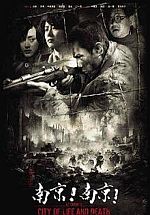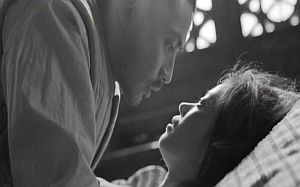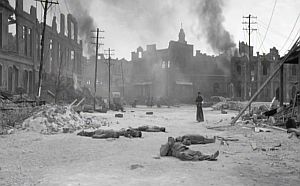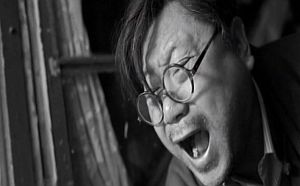|
City of Life and Death

AKA: Nanking! Nanking!, Nanjing! Nanjing!
Year of release: 2009
Genre: war drama
Director: Lu Chuan
Producers: Zhao Hai-Cheng, Yang Xin-Li, Han Xiao-Li, Jiang Tao, Liang Yong
Writer: Lu Chuan
Cinematography: Cao Yu, He Lei
Editor: Teng Yun
Music: Liu Tong
Stars: Liu Ye, Gao Yuan-Yuan, Qin Lan, Fan Wei, Nakaizumi Hideo, Jiang Yi-Yan, Zhao Yi-Sui, Yao Di, John Paisley
Rated IIB for violence, language, nudity, and sexual situations
UK readers: the DVD and Blu-Ray are available from Amazon UK.
Movie review index
Main page
|
 
 
|
A gritty and downbeat look at the Japanese occupation of the Chinese capital of Nanking during 1937 (a period that would come to be known as the "Nanking massacre" or the "rape of Nanking") Lu Chuan's Mainland/Hong Kong co-production City of Life and Death isn't exactly light entertainment for the whole family. And even though -- like many films based on historical events -- some liberties might have been taken with the facts, this is still a very powerful cinematic experience.
I had to put "might" in that last sentence because the actual numbers behind the Nanking massacre have come under dispute by revisionist historians over the past few years. But what there is no doubt of is that the early weeks of the Japanese occupation brought on violence of an almost unimaginable scale, with tens of thousands of Chinese women being raped, and (by some reports) 300,000 Chinese killed, most of whom were executed after the Japanese had control of the city.
Taking on a story like this is no small task, so Lu Chuan (who also wrote the script) wisely concentrates most of the film on an area known as the "Nanking Safety Zone". Run by a German businessman and Nazi party member John Rabe, the area provides a small bit of sanctuary. The zone is surrounded by a Japanese garrison, which includes a young sergeant, Kodokawa, whose conflicting feelings abut the army's actions begin to intensify as the troops begin to break the truce to get women to put into "comfort stations".
Kodokawa's portrayal has been the main point of contention for many critics, especially those from China, for whom memories and stories of the Nanking massacre still run raw and deep. Even after a year sitting in limbo while being approved by China's governmental censorship board, some felt that Kodokawa was still portrayed as far too sympathetic of a character.
For myself, a white guy some seventy years removed from this movie's events, I didn't have a problem with Kodokawa. There might be a couple of times where he smiles and does a couple of tertiary good gestures, but by no means, is he a nice guy, and the resolution of his character, as well as the film as a whole, seems fitting and satisfying, at least as far as a movie as dour as this can possibly be.
RATING: 7
|
|




